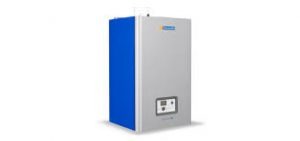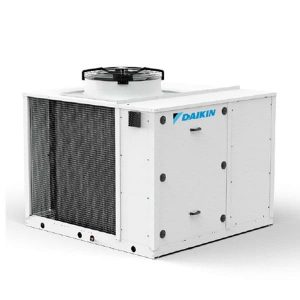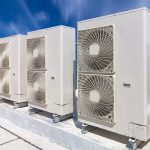Low Carbon Options for Commercial Heating
There is ever-growing pressure for the commercial building sector to ‘do its bit’ toward a low-carbon future. For many commercial buildings, the most significant target for high energy use will be heating, while others, such as hospitality and leisure, will have significant hot water demands to deal with as well.
There are over 2 million commercial buildings in the united kingdom using around 100TWh of natural gas annually. This is about a third of the amount of natural gas used in domestic buildings. 78% of gas is used for heating, with hot water accounting for around 9%.
High-temperature, wet heating systems using gas boilers are the most common method of heating for commercial buildings, and the most likely to be encountered in the retrofit market. Unfortunately, these systems are inadequate for most of the current low-carbon technologies.
Utilising heat pumps for low-carbon heating
Heat pumps are currently the renewable technology of choice, but they need the right operating conditions if they are to deliver performance that is at least at the same level commercial building owners are getting from their natural gas, LPG, or oil systems. The appeal of heat pumps comes largely from their ability to provide heat with relatively low electricity consumption – ideally using electricity from renewable sources. There are limitations, though, to our renewable generation capacity, exacerbated by competition from other growing uses, such as electric vehicles.
Heat pumps work best at flow temperatures of no higher than 55°C. This means we need to focus attention on the capacity of the emitters, such as radiators, to see if they can provide the output needed. In many cases, this results in the need to upgrade those radiators for larger or fan assisted radiators. Pipework flow rates also need consideration, since heat pumps will typically operate at smaller delta T, meaning higher flow rates. Often this can be accommodated with the existing pipework, but occasionally parts of the system will need upgrading to ensure effective performance.
Another key challenge for heat pump retrofit is the availability of the electrical supply. Most commercial buildings require 100amp, three-phase supplies to power the larger heat pumps required as a minimum. One of the first steps needed is to establish, via the electricity District Network Operator, whether enough capacity is available without expensive reinforcement works.
The pictures below (not to scale) are of a 100kW heat pump and a 100kW boiler to give you an understanding of the difference in size. The sizing of a heat pump can cause major constraints as they take up much more space than a conventional gas boiler. Although they are usually sited outside they still need to be in close proximity to the existing plant room. Dimensions of the boiler in mm are (574 x 890 x 541) and dimensions of the heat pump in mm are (2,180 x 4,850 x 2,240).


Achieving low carbon heating with electric boilers
Electric boilers are 100% efficient and the space required is very similar to a gas boiler if not smaller. They are also much easier to site as they do not have a flue like a combustion boiler. However, as it stands electricity is about 3 times the price of gas and without the added heat taken from the ground or air like a heat pump they can be very costly to run. They also require a larger electrical supply than a heat pump as they do not have the extra efficiencies. This means that whilst they can work well in light commercial applications, they are rarely feasible in larger properties.
Biomass boilers
Biomass boilers are powered by wood pellets which makes them net zero carbon as the oxygen released by the trees in growing the wood offsets the CO2 produced in burning the fuel. These have a lower running costs than the heat pump and electric alternatives but require significantly more maintenance. Like a heat pump they do tend to be much larger than gas boilers as well as requiring a flue with strict regulations. In colder months, biomass boilers can also produce a significant amount of noise, or “kettling.” This can be a good option for larger buildings looking to lower their carbon alongside saving money on their heating bills. We do however recommend having a traditional gas or oil boiler as a backup when looking to this option.
Hybrid heating systems as an alternative
If some of the challenges mentioned above prove to be an issue, an alternative option is to consider a hybrid system. Heat pumps and natural gas boilers working in tandem can overcome many of the difficulties highlighted, while still providing significant carbon savings.
In conjunction with weather-compensated heating circuits, hybrids can still provide up to 80% of the carbon savings that would be expected from a heat pump-only systems. This is because higher temperatures and outputs associated with a gas boiler are only needed a few days each year.
For air source heat pumps, this will be when the outside temperature is lowest and consequently their COP is lowest. This solution significantly reduces the system upgrades necessary and associated disruption.
Hybrid systems can be seen as a staged approach keeping options open for future flexibility as the gas grid begins to decarbonise through the introduction of hydrogen blends. If a local area does eventually have a full 100% hydrogen supply, building owners will have the option to use either gas or electricity.
In summary, both heat pumps and hybrid systems are valuable options that can help move us towards the decarbonisation of commercial properties, however, it is important to weigh up possibilities before settling on a route, as all technology has its pros and cons. At Cowley Group we can help with this by surveying your property and providing our recommendations given the situation and agreeing on what a successful outcome would look like for your buildings needs.






